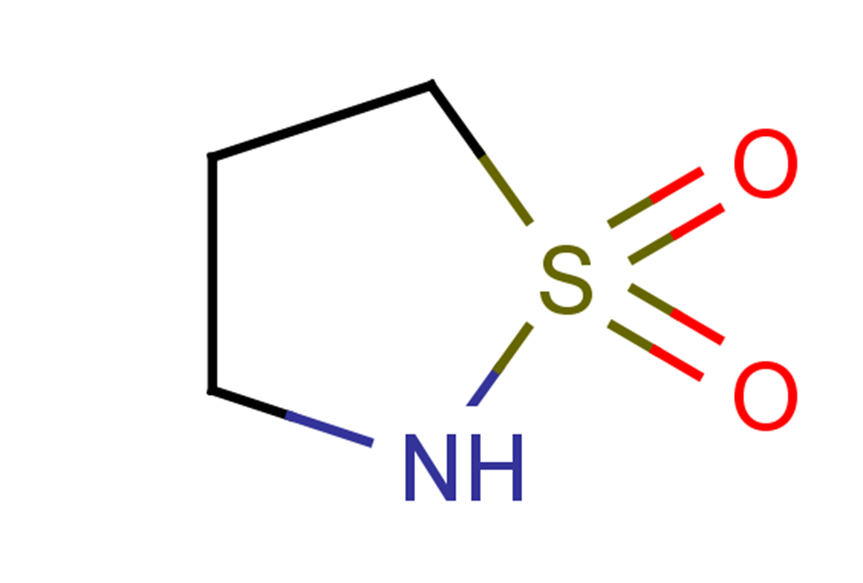
ISOTHIAZOLINE 1,1-DIOXIDE
CAS No. 5908-62-3
ISOTHIAZOLINE 1,1-DIOXIDE( isothiazolidine 1,1-dioxide )
Catalog No. M22208 CAS No. 5908-62-3
ISOTHIAZOLINE 1,1-DIOXIDE is a reactant used in the synthesis of orally bioavailable hebatits B caspid inhibitors, and in the preparation of cryptochrome imhibitors as antidiabetic agents.
Purity : >98% (HPLC)
 COA
COA
 Datasheet
Datasheet
 HNMR
HNMR
 HPLC
HPLC
 MSDS
MSDS
 Handing Instructions
Handing Instructions
| Size | Price / USD | Stock | Quantity |
| 100MG | 38 | In Stock |


|
| 200MG | 53 | In Stock |


|
| 500MG | Get Quote | In Stock |


|
| 1G | Get Quote | In Stock |


|
Biological Information
-
Product NameISOTHIAZOLINE 1,1-DIOXIDE
-
NoteResearch use only, not for human use.
-
Brief DescriptionISOTHIAZOLINE 1,1-DIOXIDE is a reactant used in the synthesis of orally bioavailable hebatits B caspid inhibitors, and in the preparation of cryptochrome imhibitors as antidiabetic agents.
-
DescriptionISOTHIAZOLINE 1,1-DIOXIDE is a reactant used in the synthesis of orally bioavailable hebatits B caspid inhibitors, and in the preparation of cryptochrome imhibitors as antidiabetic agents.
-
In Vitro——
-
In Vivo——
-
Synonymsisothiazolidine 1,1-dioxide
-
PathwayOthers
-
TargetOther Targets
-
Recptorhebatits B caspid
-
Research Area——
-
Indication——
Chemical Information
-
CAS Number5908-62-3
-
Formula Weight121.16
-
Molecular FormulaC3H7NO2S
-
Purity>98% (HPLC)
-
Solubility——
-
SMILESO=[S]1(=O)CCCN1
-
Chemical Name——
Shipping & Storage Information
-
Storage(-20℃)
-
ShippingWith Ice Pack
-
Stability≥ 2 years
Reference
1.Rolfe A , Painter T O , Asad N , et al. Triazole-containing isothiazolidine 1,1-dioxide library synthesis: one-pot, multi-component protocols for small molecular probe discovery.[J]. Acs Combinatorial Science, 2011.
molnova catalog



related products
-
oroxylin A 7-O-β-d-g...
Oroxylin A 7-O-β-d-glucuronide was a new alkaloid which found in the bulbs of Lycoris radiata.
-
Flavanomarein
Flavanomarein demonstrates potent antioxidative property, including free radical scavenging activity, inhibition of lipid peroxidation, as well as lipid-lowering effects in human HepG2 hepatocellular carcinoma cells treated with free fatty acids (FFAs).
-
TAT (48-57) TFA
TAT (48-57) (TFA) is a cellular permeability peptide derived from hiv-1 transcriptional activator (TAT) protein residue 48-57.



 Cart
Cart
 sales@molnova.com
sales@molnova.com


